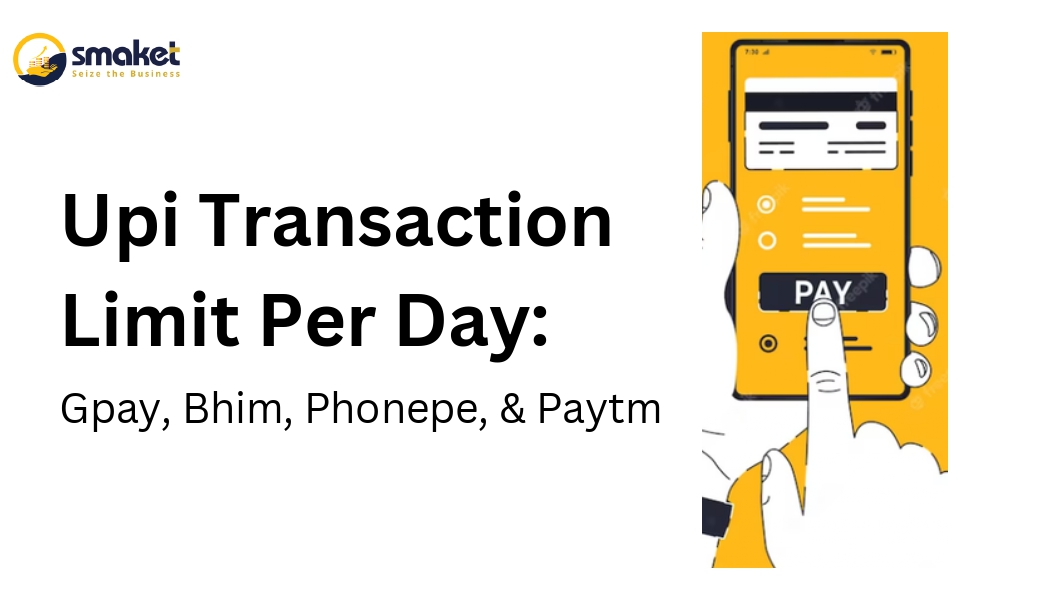In India, the use of the Unified Payments Interface (UPI) has revolutionised financial transactions. The National Payments Corporation of India (NPCI) created this digital rapid payment system that enables consumers to move money between two accounts using their mobile phones. In this article, we’ll examine the daily UPI transaction caps for well-known UPI-enabled apps including GPay, BHIM, PhonePe, and Paytm.
What is UPI?
A digital instant payment system called UPI was created by NPCI and is governed by the RBI. It allows consumers to utilise their mobile devices to move money between their bank accounts whenever they choose. Because UPI transactions are convenient and safe, many Indian users prefer using it.
Important Features of UPI:
- Users need to provide their bank details only once while registering their UPI ID.
- Multiple bank accounts can be operated using a single UPI app.
- Transactions can be scheduled for convenience, including bills and rents.
- UPI transactions can be made 24/7.
- All UPI transactions are linked to a user’s Aadhaar Card.
- Each transaction undergoes multiple security checks for enhanced safety.
-
You can transfer funds with a single click.
General UPI Transaction Limit:
The NPCI has currently established a limit of INR 1 lakh per UPI transaction. In a single UPI transaction, users canalso transfer up to INR 1 lakh.
Bank-Wise UPI Transaction Limit:
The UPI transaction limits vary by bank. While some banks have reduced limitations to safeguard consumers from unauthorised withdrawals in the event of device theft, others allow customers to transfer as much as they like (up to INR 1 lakh) each transaction. Depending on the bank, the UPI transaction cap ranges from INR 10,000 to INR 1 lakh. Additionally, each bank may have a different maximum for UPI transactions per day, which is normally 20.
UPI Transaction Limits on Different UPI-Enabled Apps:
Transaction limits differ between UPI apps. The transaction thresholds for well-known UPI apps are as follows:
GPay (Google Pay):
- 1 million Indian Rupees per transaction per day.
- 10 transactions maximum per UPI app.
- Other parties may be asked for up to INR 2,000.
PhonePe:
- 1 million Indian Rupees per transaction per day.
- 20 transactions maximum per UPI app.
- You may ask for as much as INR 2,000 each day.
BHIM App:
- 1 million Indian Rupees per transaction per day.
- 10 transactions maximum per UPI app.
- Receivers of offline transfers must have activated BHIM accounts.
Paytm:
- 1 million Indian Rupees per transaction per day.
- 10 transactions maximum per UPI app.
- Receivers of offline transactions must have open PAYTM accounts.
Conclusion:
Money transfers in India have undergone a revolution thanks to UPI, which offers convenience and security. Users can conduct a variety of transactions and receive unbroken services as long as they stay within the UPI transaction restrictions. Technologies like UPI AutoPay simplify recurring payments. Along with NEFT and RTGS, UPI has revolutionised the world of money transfers, and also India takes pleasure in having introduced UPI first. UPI gives individuals limitless freedom for their financial transactions when implemented properly.
FAQ:
1. How does UPI operate and what is it?
Unified Payments Interface, or UPI, is a digital instant payment platform that enables mobile device-based money transfers between two bank accounts. In order to transfer and receive money safely and conveniently, it links the user’s bank account to a specific UPI ID.
2. Do UPI transactions have any transactional limits?
Yes, UPI transactions are subject to transaction restrictions. The NPCI has currently established a limit of INR 1 lakh per UPI transaction. Individual banks may, however, have their own restrictions, which might range from 10,000 to 1 lakh rupees per transaction. Additionally, the overall number of transactions permitted each day can have a cap, which is normally between 10 and 20.
3. What are the maximum transaction amounts for well-known UPI-enabled applications like GPay, BHIM, PhonePe, and Paytm?
GPay (Google Pay): you can send up to INR 2,000 to other people and receive up to INR 1 lakh per day in a single transaction and up to 10 transactions across all UPI apps. PhonePe: Up to 20 transactions per day across all UPI apps, INR 1 lakh per day in a single transaction, and INR 2,000 in requests per day. BHIM App: Up to 10 transactions per day across all UPI apps, up to INR 1 lakh per day in a single transaction. Receivers of offline transfers must have activated BHIM accounts. Paytm: Transaction thresholds can change. To get the most recent information, we advise checking out Paytm’s official website or mobile application.
4. Am I able to lower the current UPI transaction limits?
No, you cannot lower the current UPI transaction limits as an individual user. The NPCI and also the relevant banks establish these restrictions to maintain the security of transactions and prevent unauthorized withdrawals in the event of device theft. However, as long as you stay within the boundaries, you can conduct transactions.
5. How secure and safe are UPI transactions?
Yes, UPI transactions are safe and secure by design. To safeguard user information and payments, UPI apps put each transaction through a number of security checks. UPI apps also employ authentication and encryption techniques to protect the confidentiality and integrity of transactions. To reduce the risk of unauthorised access, it is also crucial to adhere to recommended practises such avoiding disclosing UPI PINs or other sensitive information to anybody and maintaining the security of your mobile device.

